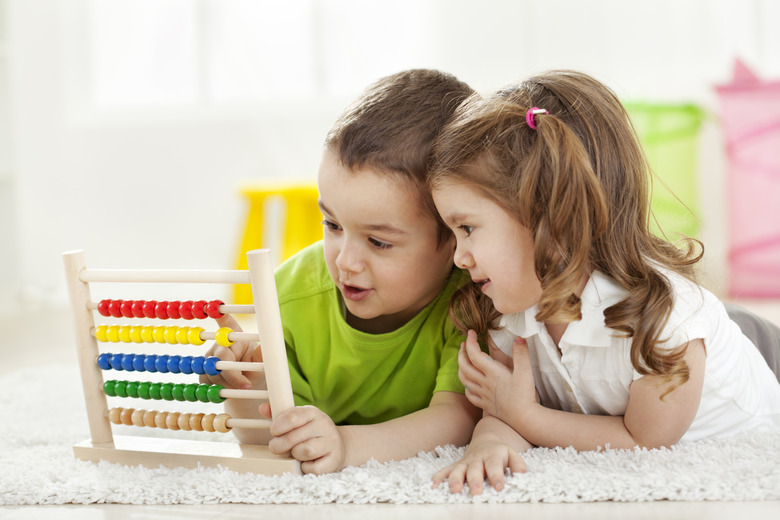Activities For School Family Math Night
Family Math Night at school is a way to invite parents and siblings into the classroom and allow them to be part of the learning. Activities for this event in elementary school classrooms should be entertaining, familiar to the students in the class and easily adaptable to people of various ages and levels of education. They should incorporate skills the students are working on and encourage family members to interact with each other.
Math Bingo
Math Bingo
Play math bingo in a large group. You will need a variety of game boards with numbers on them and a supply of colored chips. In kindergarten, play a simple bingo game by calling out individual numbers and instructing players to search for them on their boards and cover the numbers with chips if they appear. Once someone has a complete row, he can call out BINGO! Play addition or subtraction bingo in grades two and three. Call out math facts such as six plus four or 16 minus two, and tell players to determine the answer and search for it on their boards. Play multiplication bingo in higher elementary grades such as fourth.
Subtraction Cover-Up
Subtraction Cover-Up
Subtraction cover-up is a simple game that is easy to set up. The game should be played in partners. Supply partners with a set amount of countable objects like connecting cubes, paper clips or colored chips. Partners will also need one large piece of card stock or construction paper, folded in half. They will stand the paper upright in front of them. Both partners should know the starting amount of objects. One partner will close her eyes while the other hides a desired amount under the folded paper. The second partner will then open her eyes and guess how many objects are hidden. In first grade, use total amounts up to 10. In second and third grade, use amounts up to 20. In fourth and fifth grade, increase the number of objects used up to 50, as needed.
Pattern Block Puzzles
Pattern Block Puzzles
Pattern block puzzles is a versatile activity. Players can complete a puzzle independently, with a partner or competitively in a small group. Set out a variety of challenging pattern block puzzle pictures that children and their family members will build using actual pattern blocks available in the classroom. For those who want to engage in a contest, provide a timer and watch children compete against their parents or siblings to finish the puzzle first.
Classroom Supermarket
Classroom Supermarket
As a class, set up a model supermarket or school-supply store in the classroom prior to the event. Students can decide on prices for all items together or in partners. Provide math night visitors a bag of bills and/or change — real or play money — and instruct them to shop for items in the pretend store. Students in the class will then "ring them up" by adding the prices together. They will need to make change if a shopper gives more than the exact amount. For younger grades like first, prices should be low and simple. For upper grades like third and fourth, prices can be more advanced, such as higher dollar amounts with change.
Cite This Article
MLA
Pancare, Rachel. "Activities For School Family Math Night" sciencing.com, https://www.sciencing.com/activities-school-family-math-night-5384944/. 24 April 2017.
APA
Pancare, Rachel. (2017, April 24). Activities For School Family Math Night. sciencing.com. Retrieved from https://www.sciencing.com/activities-school-family-math-night-5384944/
Chicago
Pancare, Rachel. Activities For School Family Math Night last modified August 30, 2022. https://www.sciencing.com/activities-school-family-math-night-5384944/
